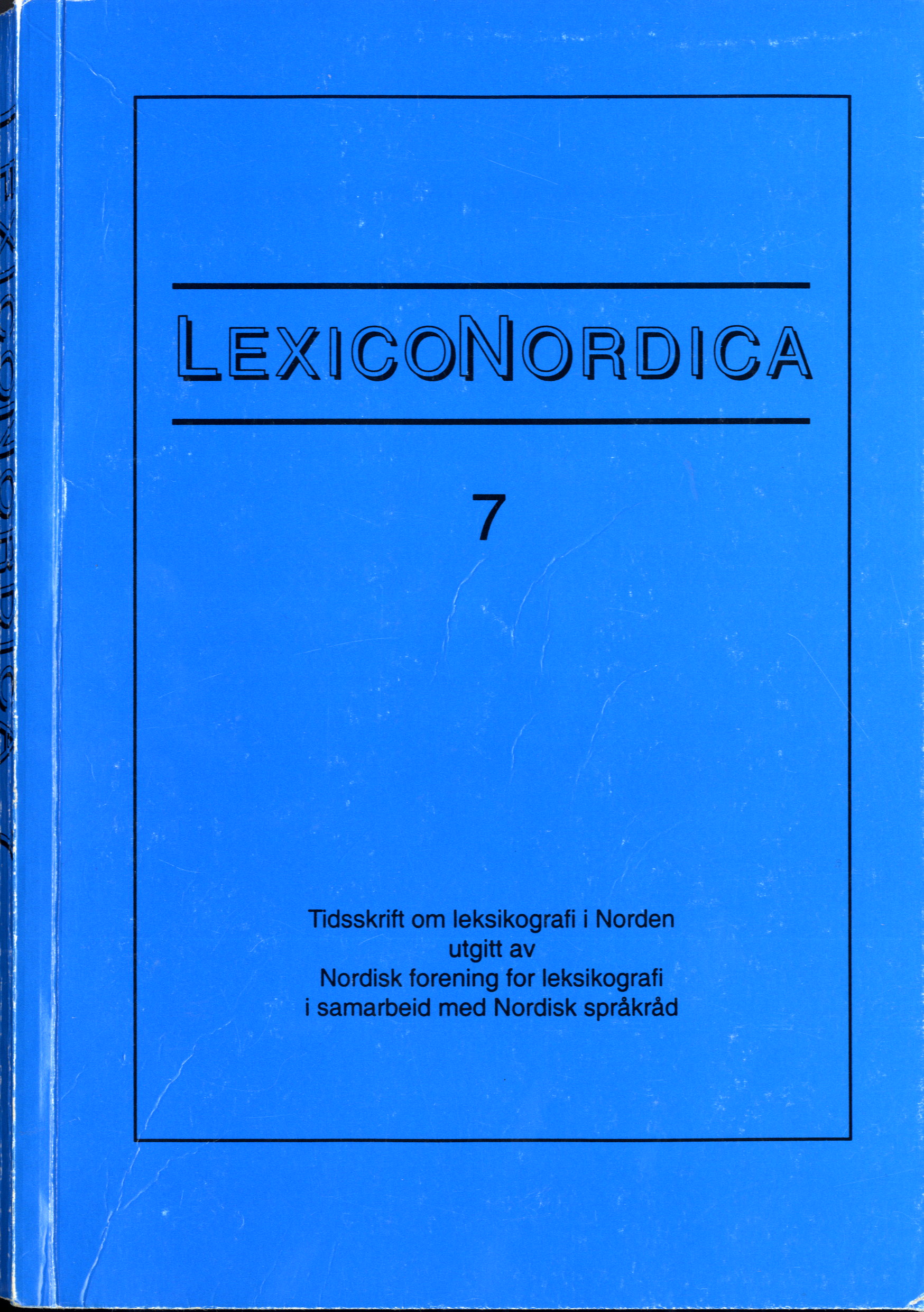Svensk lexikografitradition
DOI:
https://doi.org/10.7146/ln.v0i7.18812Resumé
When discussing “Swedish lexicographical tradition” one has to distinguish between
general activities of lexicographical nature and systematic lexicographic description
in a strict sense. With respect to this distinction, the lexicographical tradition in
Sweden can be suggested to have passed through three different periods: (1) before
1700; (2) c. 1700 – c. 1850; (3) after 1850. The first period is dominated by
lexicographic products facilitating for Swedes to study Latin. The second period
witnessed an ever-increasing number of bilingual or multilingual dictionaries
containing lexicographic information on the Swedish language. By the beginning of
the third period, the first Swedish monolingual defining dictionary appeared,
whereby the modern Swedish lexicographical tradition had been fully established.
The roots of the first period can be traced back to the traditional study of Latin on
the European continent. In particular, the “art” of the medieval grammarians
contains the seeds of later lexicography. The bilingual dictionaries are partly
triggered by practical needs, partly by a patriotic atmosphere, the latter subsequently
leading to conscious and deliberate language planning. During the third period, the
focus lies on monolingual dictionaries, both with general and with very specialized
purposes. Since, in Sweden, the first printed books that can be considered to be
dictionaries appeared towards the middle of the 16th century, the first two periods
can be argued to have spanned approximately 150 years each. There are reason to
believe that now, another 150 years since 1850, we are facing a new era of
dictionary-making, with quite new characteristic features.
Downloads
Publiceret
Citation/Eksport
Nummer
Sektion
Licens
LexicoNordica og forfatterne





